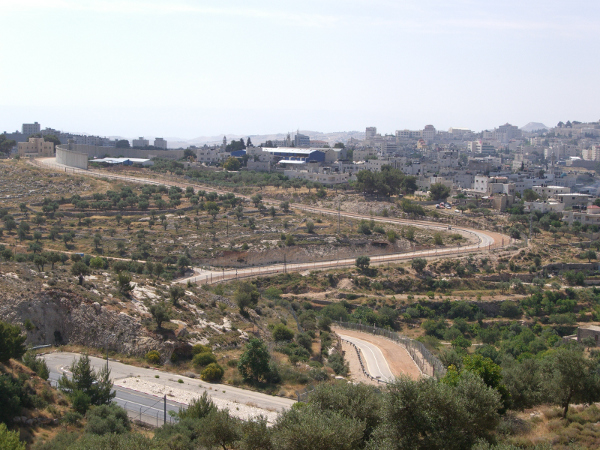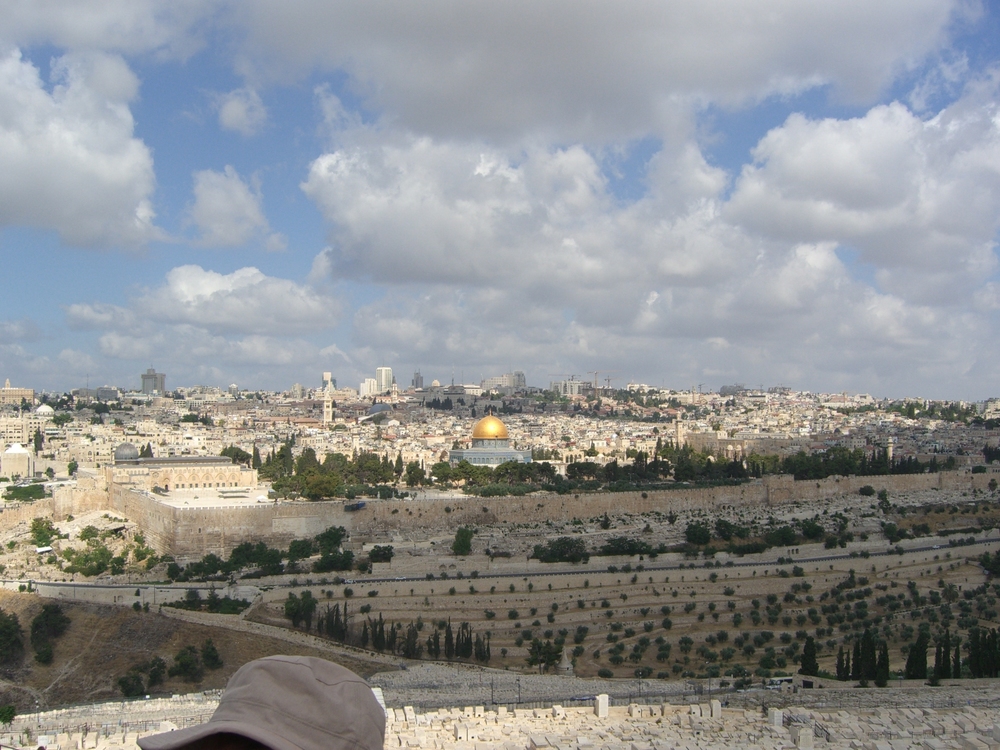I was in Capernaum a few days ago. Then, after a stop in Nazareth and a night in Tel Aviv, I came home. It’s good to be home. It’s good to have a place to call home and come back to.
As many of you know, I was in Israel with a group of seven Jewish leaders and nine Christian clergy from Nashville, and the trip was all I hoped it would be and more. Our immersion in the beauty of the land and its many layers of history and memory was brief, but deep. I knew at the end of our first day in Jerusalem that I wanted to come back.
I came home Thursday night after spending more than 24 hours on planes and in airports. The flight from Tel Aviv to Newark, New Jersey took eleven hours. Our bodies fly through the air at almost 600 mph, but our souls, our capacity to integrate all we have touched and seen and heard, tasted and smelled and learned, our souls take more time. I arrived Thursday night, but I’m not quite here yet; my soul is still catching up.
On Tuesday I was in Capernaum, the home base of Jesus’ ministry in Galilee, and I walked among the ruins of a synagogue built on the foundations of a synagogue from the time of Jesus, and across the street was a church, built on the foundations of earlier churches, and the bottom layer of rocks belonged to a house, the house of Peter and Andrew, according to tradition.
In chapter 3 of Mark, we read that Jesus went from the synagogue to the lake, and from there up the mountain with the twelve, and then, it says in verse 20, he went home. Home has to be one of the strongest words in any language. It was good for Jesus to be home, I imagine; to sit in his favorite chair and put his feet up; to look out the window and see the familiar view. Where do you imagine Jesus went when it says, he went home? Didn’t he say, “Foxes have holes, and birds of the air have nests; but the Son of Man has nowhere to lay his head”?[1] Other English versions of this passage stay closer to the Greek by translating, ‘he entered a house.’ Capernaum was the home base of Jesus’ ministry in Galilee, and the house he entered may well have been the house of Peter and Andrew, just across the street from the synagogue. Going there at the end of a long day of healing and teaching must have felt like coming home, but once more such a crowd gathered round them that they had no chance even to eat. The house sat like an island in a sea of people who wanted to be near him, people who were drawn to Jesus because of his power to heal and forgive. And then his family showed up; his mother, his brothers and sisters, outside. The people who had been with him the longest, the people, presumably, closest to him, the people who knew him best; and they were there not out of concern for his well-being, that he may not be getting enough sleep or may not be eating right, no, they had come to get him, to restrain him, if necessary. “He is out of his mind,” they said. His own family did not recognize the power at work in him. They thought it was madness and had come for an intervention. They wanted to take him back to the life before his baptism, back to the familiar routines untouched by the proclamation of God’s coming kingdom, back home, we might say, or what they considered to be his home.
And they were not the only ones who didn’t quite know what to make of his work and words. Religious experts from Jerusalem were watching the scene and making their comments, accusing him of being in league with the master of demons, alleging that his work and words were sorcery and black magic. Like his own family, they did not recognize the power at work in him to be the power of God. His teachings, his actions were too disruptive.
His family and the scholars from the city were not slow or blind; they, like us, were living in difficult times, and like us they wanted to maintain what little stability was left in their domestic and religious life. And Jesus was rocking the boat. He was healing and liberating folk from all that kept them captive to powers other than the love and mercy of God, and he did it regardless of who they were or where they came from or what day of the week it was – there was no proper order to it; his words and actions seemed extravagant and reckless, frightening even to some. They were not slow or blind; they were living in difficult times and they wanted to hold on to what they knew, and protect what little normalcy and peace they had. Jesus was too disruptive; to them his power felt like chaos. “He is out of his mind,” his family said; “he’s fighting demons with demons,” the scholars from the city concluded. The presence and work of God in Christ was not unambiguous, and what was liberating and healing to many, looked like madness or even the devil’s work to others. Again, they were not slow or blind; they did not know what to make of the disruptive presence of Jesus to whom the wounded and the oppressed were drawn.
Mark paints a scene for us. It’s a little house with Jesus in it, and around it a throng of people, the mess of humanity in all its diversity, beauty, and imperfection; people of all ethnic backgrounds and political convictions, people on crutches and on stretchers, poor and rich; all of humanity with our hopes and our fears, our flaws and our dreams, with our hunger and thirst for life, and we’re pressing in at the doors and windows, aching to be near Jesus and to touch the hem of his cloak. The only ones to remain on the edge of the scene are the ones who have made up their minds because they already know what’s best for the family and for religion, and in their world Jesus must be restrained. In their world, the disruptive presence and work of God needs to be kept under control.
Jesus was at odds with his family and in conflict with the religious authorities, but not because he was a young man with wild ideas. Jesus identifies himself as the thief of God who has come to plunder the strong man’s house. He has tied up the strong man and now he’s ransacking the place. Jesus is the thief of God who has come to rob the biggest thief of all. Life belongs to God, not to the master of demons, the whispering liar who sows the seeds of lovelessness that grow into thickets of sin in which our true humanity is lost. Jesus has his eyes on the strong man’s house, a house as big as the world, and on us who are tempted to believe that living in the strong man’s house is as good as it gets. Jesus ties up the strong man, demon by demon, fear by fear, lie by lie, and leads the captives to freedom, leads them home.
Mark paints a scene for us; it’s a little house with Jesus in it. It was first seen in a village on the western shore of the sea of Galilee, but since then people have found it in communities around the world. It’s where Christ’s power to heal and forgive resides. At times we may be standing outside with those who say he is out of his mind; he his beside himself; he’s completely out of it, they say, and there’s truth in their confusion. Because his life, in contrast to ours, revolves entirely around the will of God, and the whisperer of loveless lies can’t get a handle on him. “He is out of his mind,” they say and we, at times, with them, and there’s truth to it, because Jesus is completely in sync with the mind of God. “He is beside himself,” they say and we, at times, with them, and there’s truth to it, because Jesus doesn’t fall into our self-absorbed ways and doesn’t think of himself outside of his relationship with God. He entrusts himself completely to the flow of love and grace and offers with reckless extravagance what he receives.
A crowd is sitting around him and pressing in at the doors and windows, aching to be near him, and they say, “Your mother and your brothers and sisters are outside asking for you.” And he looks at all the humanity sitting around him, all of us wounded ones, all of us lost ones in the thickets of sin, all of us with our hunger for life that is really life and not just death’s prelude, and he says, “Here are my mother and my brothers! Whoever does the will of God is my brother and sister and mother.” Jesus sits in the midst of those who long for healing and freedom, and where Jesus is present, God speaks and shines and rules. The beauty of his mission is that the closer we draw to him with our desire to touch and be healed by his wholeness, the closer we draw to each other. And the closer we draw to the reality of suffering and longing in each other, the closer we draw to him and the wholeness he brings to creation.
There’s a little house with Jesus in it; it was first seen in a village on the western shore of the sea of Galilee, but since then people found it in communities around the world. It’s where Christ’s power to heal and forgive resides. It’s a little house that’s big enough for all of us; it’s home.
[1] Matthew 8:20; Luke 9:58








